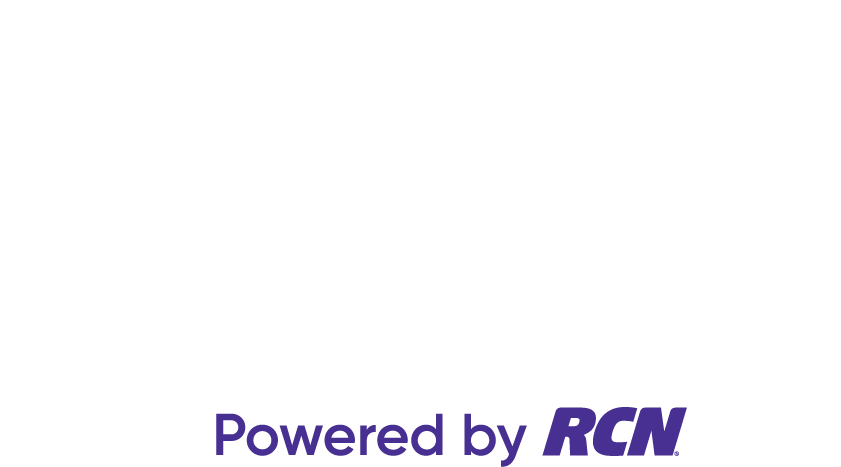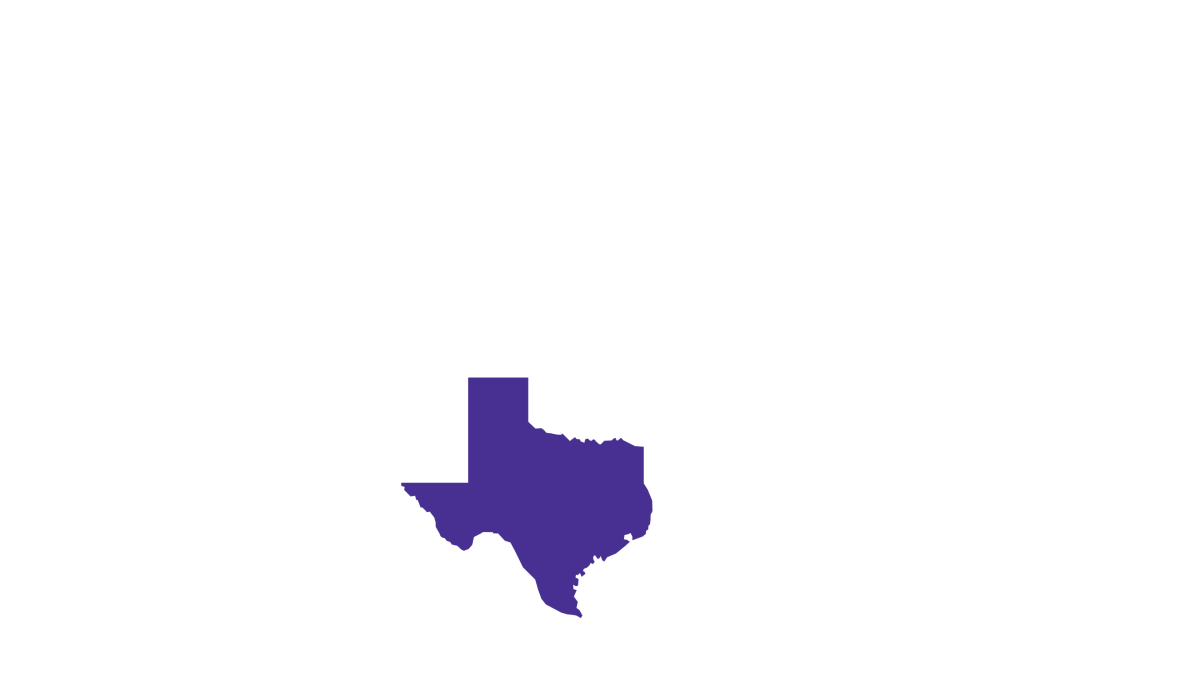Types of internet connections: A quick guide

Advancements in internet technology have expanded the number of options for access. The internet facilitates our society’s communication, work, entertainment and education.
Given the wide range of online activities demanding reliable internet access, understanding the different types of internet connections is crucial for deciding which type best suits your needs.
The main types of internet connections include:
- Broadband internet connections, such as fiber, cable and fixed wireless internet.
- Mobile internet connections, including 4G and 5G networks and mobile hotspots.
- Dial-up internet connections, through a standard telephone line.
This article explores the main types of internet connections to help you identify the best option for your needs.
Find your speed
What speed do you need?
Maybe you just need the essentials—or maybe you need to unleash the ultimate internet speed. Explore your options to get the best experience for every device in your home.

Broadband internet connections
Broadband is a high speed internet connection that offers faster data transmission and a broader bandwidth capacity. It’s accessible through various mediums, such as wired broadband connections (fiber, cable and DSL), fixed wireless internet or satellite technology.
Let’s look at the various types of broadband internet connections:
DSL
DSL stands for Digital Subscriber Line. It offers an internet connection through the telephone line, enabling wide availability, especially in areas not yet covered by newer internet technologies. DSL internet speeds vary, ranging from 1 Mbps to 400 Mbps for download speed and 384 Kbps to 8 Mbps for upload speed.
While DSL internet is widely available, its speeds are affected by the distance between the user’s location and the central office, with users living farther away experiencing slower speeds.
Cable internet
Cable internet connections use the same coaxial cable that delivers cable television to provide high speed internet access, making it widely available in urban and suburban areas. It offers higher speeds than DSL, ranging from as low as 10 Mbps to 1 Gbps.
While cable provides high internet speeds, it is asymmetric, emphasizing download speeds over upload speeds. Asymmetric connections follow the general internet usage pattern, with more downloading than uploading activities.
Cable/DOCSIS technology is changing fast with DOCSIS 4.0 coming to allow for speeds up to 10Gbps and some symmetrical speeds as well. Astound offers 1.5G today
Fiber optic internet
Fiber internet is currently the fastest and most reliable means of transmitting the internet. It uses light signals to convey data via fiberglass strands. Fiber connections provide significant bandwidth capacity, minimal latency and less signal interference from electromagnetic interference and environmental factors.
Fiber connections provide Gigabit+ speeds, ideal for bandwidth-intensive activities such as 4K streaming, online gaming and massive file transfers. They also offer symmetrical internet, with similar download and upload speeds. Symmetrical connections facilitate online activities that rely on upload speeds, like video conferences, live streaming and cloud service syncing.
Satellite internet
Satellite internet connections provide internet access from satellites orbiting the Earth. They are mainly available in rural or remote places where wired and fixed wireless connections are unavailable.
While satellite internet provides broader coverage, its speed varies significantly, typically ranging from 25 Mbps to 150 Mbps. It experiences higher latency as the signals travel from the Earth to the satellite and back, increasing the distance the signals cover. Satellite internet is also affected by weather conditions and environmental factors.
Fixed wireless internet
Fixed wireless internet, or 5G home internet, is a broadband connection that relies on radio waves to transmit data between a cell tower and an antenna at the user’s location. It offers speeds up to 300 Mbps and is another viable option for people living in rural areas.
However fixed wireless connection performance varies due to factors like physical obstacles (buildings, trees) blocking signals or distance from the cell tower, which reduces signal strength.
Switching is easy
Switch & Save
Getting started with Astound is easy: just bring your phone or find a new one, pick a plan and add internet.

Mobile internet connections
Mobile internet connections enable users to access the internet wirelessly through cellular networks. Mobile internet technologies have evolved, offering improved speeds and reliability. These connections include:
3G networks
The third-generation (3G) mobile wireless technology offers a data transfer rate of up to 3 Mbps and better voice transmission than 2G networks. This generation supports basic data services, like email and web browsing, voice calls and multimedia messaging.
4G networks
4G networks, based on LTE and WiMAX, provide a significant speed improvement over 3G. 4G provides download speeds of 5 Mbps to 100 Mbps and an upload speed ranging from 2 Mbps to 50 Mbps. 4G facilitates data-intensive activities, like high-definition streaming and online gaming.
5G networks
5G is the latest mobile technology set to revolutionize mobile internet connectivity by providing speeds of up to 10 Gbps and lower latency than its predecessors. However, it provides typical speeds between 40 Mbps and 300 Mbps.
5G networks transmit data using millimeter waves and employ technologies such as Massive MIMO to broaden coverage. The increase in performance enables 5G networks to facilitate real-time data-intensive applications like autonomous vehicles, smart home integrations and 4K/8K streaming.
Mobile hotspots
A mobile hotspot is an alternative type of mobile connectivity that creates a wireless network for other devices using your cellular data. You can use a dedicated mobile hotspot device or your smartphone’s hotspot feature. The hotspot’s performance depends on the cellular provider’s network generation (3G, 4G or 5G), signal strength and data plan.
Mobile hotspots help provide internet access when traveling, in areas with poor broadband coverage or as a backup when there is a network outage. Consider the plan’s data caps, network range and device battery power when using a mobile hotspot. For this reason, some carriers provide mobile hotspot plans with higher data allocations.
Dial-up internet connections
Dial-up connections were popular in the 1990s and early 2000s. Although more current broadband connections have entirely surpassed them, dial-up internet is still used, particularly in rural or remote areas where other types of high speed internet are unavailable.
Dial-up connections use a standard telephone line and modem to connect to the internet. The user’s computer and modem dial the ISP’s number, establishing a connection. The modem converts digital data to analog signals for transmission over the phone line and the ISP’s equipment converts it back to digital. This connection is only active while the user is online and disconnects when the call ends.
Dial-up internet connections provide very slow speeds, ranging from 56 kbps to 64 kbps, which makes them suitable for basic email and small data transfers.
Switch & save
Astound is the #1 cable ISP
Stream live content, work, surf, game and connect to multiple devices with speeds up to 1500* Mbps through our ultra‑reliable fiber‑powered network.*

Comparison of internet connection types
The type of internet connection you choose impacts your online experience. Consider the following factors before deciding which internet type you settle for:
Speed comparison
Higher Mbps indicates faster download and upload speeds, which allow quicker data transfer, smoother streaming and more responsive online activities. Here are speed comparisons for different types of internet connections:
- Fiber connections provide the fastest speeds, ranging from 100 Mbps to Gigabit+ speeds.
- Cable offers fast speeds, usually starting at 25 Mbps and going up to 1.5 Gig. DOCSIS 4.0 standards, once released, will bring even higher speeds. However, the speed depends on the number of users currently connected to the network.
- DSL does not offer as high speeds as fiber and cable. Its speeds range from 1 Mbps to 400 Mbps.
- Satellite provides speeds of around 25 Mbps to 150 Mbps. However, higher latency, weather and environmental conditions impact its speeds.
- Fixed wireless has speeds similar to those of DSL and cable, typically around 10 Mbps to 300 Mbps.
- Mobile internet speeds vary. 3G networks provide the slowest speeds for mobile internet. 4G provides 5 Mbps to 100 Mbps speeds, while 5G can typically provide speeds between 40 Mbps and 300 Mbps.
- Dial-up internet provides the slowest internet speeds, ranging from 56 Kbps to 64 Kbps.
It’s important to note that these speeds may vary. To maximize your connection speed, consider optimizing your home WiFi setup to improve network performance.
Learn More: What is the difference between WiFi and Internet speeds?
Availability and coverage
Internet connection availability varies based on location, infrastructure and technology deployment. Here’s a breakdown of coverage for different types of internet connections:
- Fiber availability is limited compared to cable. Still, it’s rapidly expanding in urban and suburban areas, but is still very limited in rural areas.
- Cable is widely accessible in urban and suburban settings with access to cable infrastructure. However, its availability is limited in rural areas.
- DSL is available in most locations, although the distance to the central location decreases the speed.
- Fixed wireless internet is widely available. However, its performance depends on the user’s proximity to the cell towers. 5G home internet is a recent technology available in select urban areas but inaccessible in rural or remote areas.
- Satellite internet is accessible almost anywhere, making it ideal for remote locations.
- Mobile broadband coverage varies by carrier but is generally accessible in most locations.
Cost comparison
The prices of different internet connection types depend on the internet service provider, location, amount of data allocated and other additional services the ISP provides.
Here’s a breakdown of the cost considerations for different types of internet connections:
- Fiber internet is relatively costly, ranging between $50 and $300. However, it may be more cost-effective for those who use the internet extensively.
- Cable plans are often affordable but pricier than DSL. They range from $35 to $100.
- DSL is generally affordable, ranging from $20 to $70.
- Satellite internet prices are pricier than the other options, ranging from $50 to $300. Higher speed tiers can cost even more.
- Fixed wireless plans are also comparable to fiber and cable, with prices ranging from $25 to $70, depending on the ISP.
- Mobile broadband prices depend on the data plan provided by the carrier. They may bundle the plans with other services like talk, text and mobile hotspots. The prices range between $10 and $70.
WiFi that just works!
WiFi plans for any home
Tiny, large or somewhere in between; find WiFi coverage to fit any space. Blanket your entire home with a fast and ultra‑reliable connection.

Choosing the right internet connection
Before selecting an internet connection, evaluating your specific needs is crucial. Here are some processes you can implement that will help you make the right decision when choosing the ideal internet connection to set up in your home:
Assessing your needs
Assessing your individual needs is essential before selecting a type of internet connection. Key considerations include:
- Head count. The number of concurrent users connecting to the internet simultaneously. More users and devices need more bandwidth, especially during peak times. Choose an internet connection that provides a higher bandwidth capacity.
- Usage. Consider the types of activities people in your household engage in. Data-intensive activities like online gaming, streaming high-quality content and working and studying remotely require stable, fast and low-latency connections such as fiber and cable. Other options, like DSL and fixed wireless connections, can facilitate activities like casual browsing, emails and streaming HD content.
- Location. If you live in a rural or remote area, satellite and fixed wireless internet connections are viable options. Furthermore, if you travel frequently, mobile internet connections provide internet access as a backup to broadband connections.
Evaluating providers
When evaluating internet providers, consider the following:
- Evaluate your internet provider’s reliability. Research customer reviews and ratings on their performance to ensure the provider delivers reliable and consistent connections.
- If you are a heavy internet user, ensure the provider offers the speeds you need without restrictive data limits.
- When choosing customer service, consider a provider with excellent ratings.
- Compare costs and examine the contracts, fees, equipment rentals and other additional charges to ensure you are within your budget.
- Ensure the provider is available in your location.
Future-proofing your connection
To set up an internet connection for your home that meets current needs and accommodates future demands, consider strategies such as:
- Consider a provider that offers emerging internet technology, such as fiber optic connections, which provide better performance than others.
- Consider a provider that allows you to easily upgrade plans and move to higher speed tiers if necessary.
- Make sure they provide modern internet equipment that supports the latest internet standards, such as WiFi 6 and WPA2 or WPA3 for WiFi security and encryption.
- Confirm that your connection can support future smart home devices and IoT applications.
Conclusion
Different internet connection technologies exist, ranging from the older dial-up connection to the more recent fiber optic connections and fixed wireless connections like 5G home internet. Each internet connection type provides unique benefits and suits different needs.
Before choosing an internet connection, it is crucial to assess your specific needs, compare and evaluate the different providers and future-proof the connection to meet future demands.
Look at the speeds the connection offers, latency, data caps, cost, availability and coverage. Making an informed decision will result in a consistent and enjoyable online experience.
Build your plan
Your perfect plan is just a click away
Get the speeds, WiFi, mobile and TV plans you need all at an affordable price. Bundle your services with Astound and see how much you can save.

Frequently asked questions
What Is the Fastest Type of Internet Connection?
Fiber optic connections provide the fastest internet speeds, reaching up to Gigabit+ speeds. They also offer consistent and reliable connections, capable of symmetric speeds.
Can I Get High Speed Internet in Rural Areas?
Yes, satellite and fixed wireless internet are high speed options available in rural areas.
How Do I Know If Fiber Optic Internet Is Available in My Area?
You can visit the websites of your local internet service provider or use online search tools to find fiber internet providers in your area.
Is Satellite Internet a Good Option for Gaming?
Satellite internet has a higher latency count than other internet types. The latency can cause a significant lag in games, which impacts your gaming experience. Furthermore, most satellite plans have data caps, which you can exceed when downloading large gaming files. Consider wired connections like fiber and cable for consistent internet access for your gaming needs.
Create your perfect internet plan
Get the internet speed, WiFi, TV and mobile that’s just right for you.
*Internet speeds may vary & are not guaranteed. Certain equipment may be required to reach advertised speeds. DOCSIS 3.1 modem with 2.5GE physical LAN port is required for 1 Gigabit speeds and higher. See astound.com/yourspeed for why speeds may vary. To view Astound’s FCC Network Management Disclosure see astound.com/policies-disclaimers. Limited time offer, subject to change without notice. Advertised promotional price valid for duration of the stated promotional period from time of service activation. Regular rates apply after promotional period ends. Equipment not included and is extra. Modem required for Internet service. Enhanced Wi-Fi or Whole Home Wi-Fi (eero) not included and is add’l. Offer includes a monthly discount for enrollment in both automatic payments (autopay) & paperless billing (e-bill). Discount of $10 applies with automated bank account deduction or a discount of $5 applies with automated credit/debit card payment. Valid email address required. Must complete enrollment in autopay and e-bill within 30-days of placing the order. Without enrollment, the discount does not apply. Discount appears on bill within 3 bill cycles after enrolling. If either autopay or e-bill is canceled, services are changed, or the account is not in good standing, then the monthly discount will be discontinued. Offer valid only for new residential Astound customers or previous customers with an account in good standing who have not had Astound service within the last 60 days. Any add’l services, equipment, premium channels & other tiers of service are subject to an add’l charge & regular increases. A one-time activation fee of $14.99 (in addition to any installation fees) will be charged & is subject to change. Add’l fees apply for taxes & surcharges, and are subject to change. WA RESIDENTS: unless otherwise specified, price does not include a 2% Regulatory Administration Fee. For details about taxes, fees & surcharges visit astound.com/fees. No early termination fees apply in the event service is terminated in advance of the promotional end date. Customer is responsible for any accrued service charges in the event service is canceled. Subject to credit check. Not all services & speeds are available in all areas. A multi-product discount may be available to qualifying addresses with a subscription to mobile, TV, and 600 Mbps Internet or higher. Discounts will be reflected in your order cart at time of purchase, if available. Other restrictions may apply. All services are governed by the Astound Customer Terms & Conditions that can be found at astound.com/policies-disclaimers. © 2025 Radiate HoldCo, LLC d/b/a Astound Broadband. All rights reserved.
While we have made every attempt to ensure that the information contained in this site has been obtained from reliable sources, Astound is not responsible for any errors or omissions, or for the results obtained from the use of this information. All information in this site is provided “as is”, with no guarantee of completeness, accuracy, timeliness and without warranty of any kind, express or implied, including, but not limited to warranties of performance, merchantability and fitness for a particular purpose. Certain links in this site connect to other websites maintained by third parties over whom Astound has no control. Astound makes no representations as to the accuracy or any other aspect of information contained in other websites.
eero Plus is available for an additional $9.99/month and requires subscription to whole home WiFi powered by eero.

















